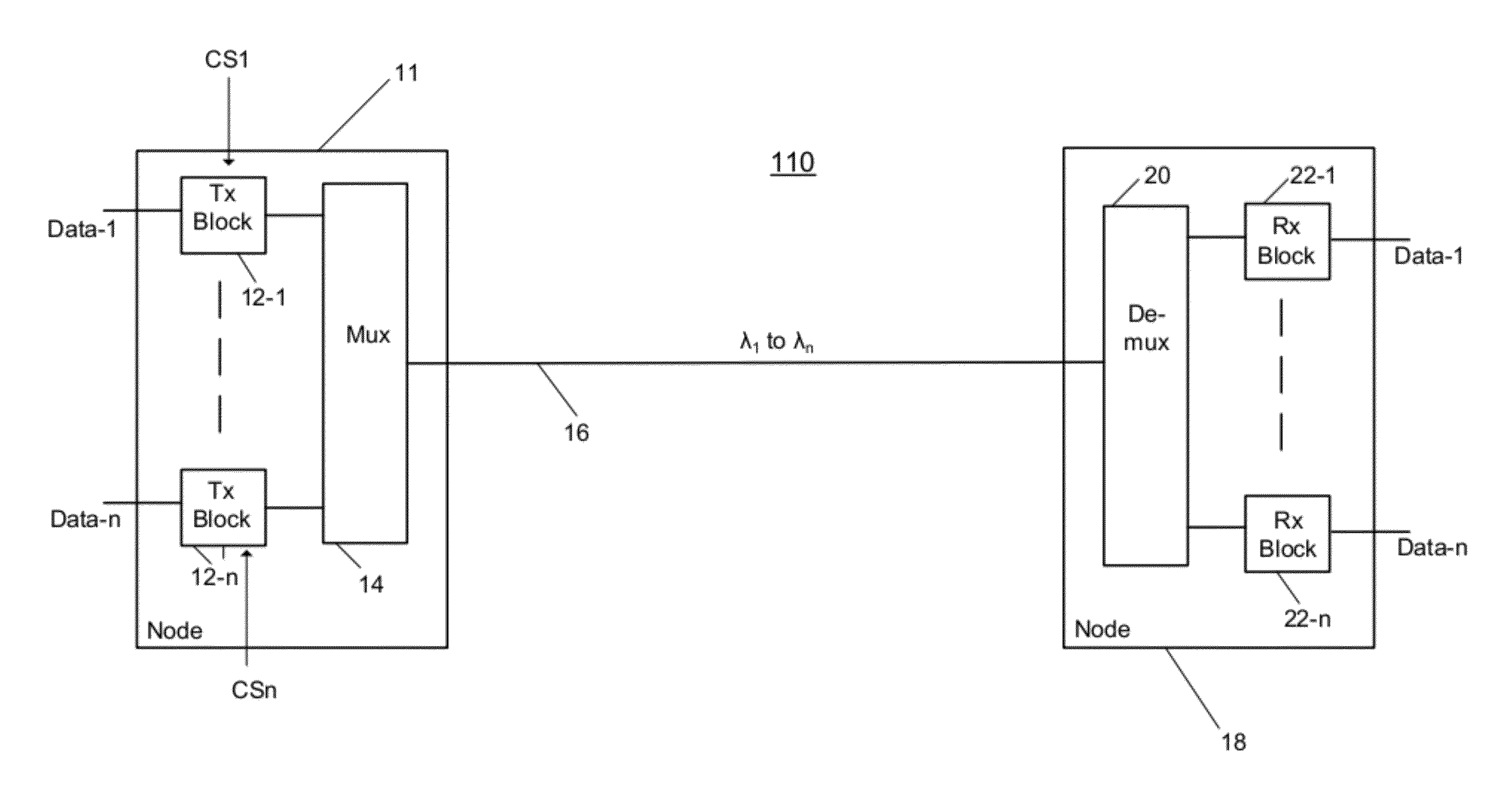Periodic Superchannel Carrier Arrangement for Optical Communication Systems
a carrier arrangement and optical communication technology, applied in the field of optical communication system periodic superchannel carrier arrangement, can solve the problems of high rate modulation format, inefficient use of optical fiber bandwidth or spectrum, and a higher rate of modulation forma
- Summary
- Abstract
- Description
- Claims
- Application Information
AI Technical Summary
Problems solved by technology
Method used
Image
Examples
Embodiment Construction
[0019]Consistent with the present disclosure, data, in digital form, is received by a transmit node of an optical communication system, and converted to an analog signal by a digital-to-analog converter (DAC) to drive a modulator. The modulator, in turn, modulates light, received from an optical source at one of a plurality of periodically and preferably minimally spaced wavelengths, in accordance with the received data. The plurality of periodically spaced wavelengths or carriers are grouped together with a fixed spacing combiner, for example, to form a superchannel. A plurality of superchannels are then multiplexed and transmitted over an optical communication path to a receive node. The multiplexed superchannels are preferably spaced apart from each other by a spacing consistent with the periodic spacing of the individual wavelengths or carriers. At the receive node, the multiplexed superchannels are demultiplexed by an optical demultiplexer and provided to a plurality of corresp...
PUM
 Login to View More
Login to View More Abstract
Description
Claims
Application Information
 Login to View More
Login to View More - R&D
- Intellectual Property
- Life Sciences
- Materials
- Tech Scout
- Unparalleled Data Quality
- Higher Quality Content
- 60% Fewer Hallucinations
Browse by: Latest US Patents, China's latest patents, Technical Efficacy Thesaurus, Application Domain, Technology Topic, Popular Technical Reports.
© 2025 PatSnap. All rights reserved.Legal|Privacy policy|Modern Slavery Act Transparency Statement|Sitemap|About US| Contact US: help@patsnap.com



